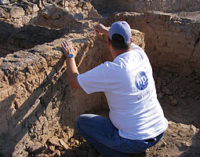Powder Coating Europe 2000

I thought the technical congress was beneficial to attendees not only because of the quality of the presentations but because the balance and diversification was quite good. It seemed that all aspects of powder were included and this served to complement much of the round table discussions, which focused on the need for suppliers, manufacturers, and applicators to work together to advance powder technology.
Topics covered in the congress included global market studies; economics; pretreatments; powder coating on various substrates such as plastic, wood and metal; formulating; additives to control gloss, texture, leveling; pigment selection; metallic finishes; weather resistant powders, silicone resins, polyurethanes, acrylics and traditional polyester, epoxy and hybrid systems. New curing techniques are being discussed and pursued by many - in particular, UV and near infrared curing. Application techniques are also being explored and, particularly promising for potential can coaters, is electromagnetic brush technology.
A product presentation forum on the exhibit floor was a popular event and provided further practical learning opportunities. A panel discussion also took place each day with industry experts to provide further insights, field questions from attendees and discuss the future.
The following were showcased on the exhibit floor.
- Raw materials - resins, pigments and additives
- Powder production equipment - kneaders and extruders, mills, screws
- An array of powder coatings demonstrating various durability properties, finishes, thicknesses, colors, application end-uses
- Application equipment
- Pretreatment needs
- Quality control and testing equipment
- Safety, health and environmental services
Also showcased were several superb looking automobiles with powder clearcoat finishes, as well as one vehicle with a single, monocoat powder finish. Powder clearcoat technology is no longer something we talk about for the future - it is current state-of-the-art technology. In fact, the BMW powder clearcoat line at Dingolfing, Germany?, is producing more than 1,000 units per day in a 100%-automated process. Visitors to the line are impressed to see the entire topcoat line operating without any workers spraying paint or handling hoods or doors.
Powder coating for matte application such as fencing, gratings, shutters and other visual architectural applications were also displayed. Some of these coatings are polyester based with metallic particles and are claimed to have outstanding weathering properties. Particularly impressive to me are the exterior home metallic doors finished with powder and then "wood grained" to appear like real wood. These have a beautiful appearance and claim superb durability and weatherability. I can certainly vouch for the appearance aspects. Marble effects are also obtained for various interior applications.
The global powder industry has an estimated value of approximately $2.5 billion. Europe represents about 50% of the total value. The U.S. powder market is showing the fastest growth rate at the moment. In 1998, the industrial appliance market was the single largest powder user in the United States. In 1999, the automotive segment had surpassed appliance by a slight margin. In Europe, the aluminum and architectural powder markets are much greater than in North America.
While it appears that we have conquered almost all the past hurdles preventing us from using powder - lower temperature applications to accommodate wood and plastic substrates, thin films and fast cure rates to allow for faster production line speeds as needed for coil - many of these areas need more work to be economical and practical. But the technology is almost there! The powder market in general is no longer in its infancy, and it will depend more on innovations in curing and application techniques to show continued growth. This in turn depends a great deal on the continued cooperation of raw material suppliers, powder manufacturers and applicators to solve problems.
There is a growing focus on faster cure techniques with application in the field. Powder coatings such as those offered by DuPont are on the market for medium-density fiberboard. In North America, the wood market for powder is growing rapidly. The Congress focused a great deal on UV powder, which is just one example of many growth potentials. Powder coatings growth over the past 10 years has been phenomenal and as each technical hurdle presented itself it was solved in very short order. I expect this will continue and have far reaching effects on the industrial paint business for the next several years.
Resin technology has remained fairly basic: epoxy, polyester, acrylic with all sorts of hybridized modifications. Acrylic technology is not widely used, however the properties of acrylic powder coatings are excellent. I should expect to see more growth in the acrylic application area over the next several years. Additive and pigment technologies are clamoring to accommodate ever increasing surface quality requirements.
Everyone I spoke with was enthused and pleased with both the Congress and the exhibition. Those who know me can believe me when I say that I talked my way through the full three days! If your business involves powder coating, I suggest you mark your calendar now for PCE 2002, which will be held January 16-18 in Amsterdam, The Netherlands.
Links
Looking for a reprint of this article?
From high-res PDFs to custom plaques, order your copy today!





